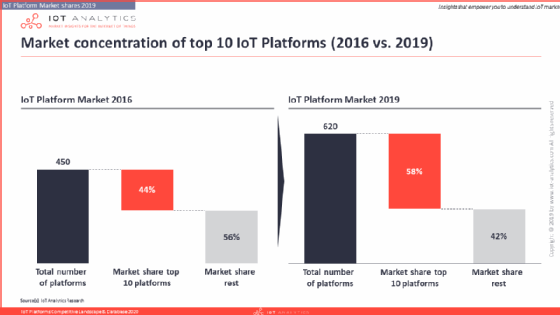
Elnur - stock.adobe.com
IoT market fragmentation complicates device deployment
Increasingly niche IoT offerings with inconsistent interoperability practices have led to a fragmented IoT market to the detriment of easy IoT adoption.
IoT market fragmentation has complicated the path to IoT adoption. Until the market matures and standards emerge, IT admins must learn how to navigate vendor offerings if they want to simplify device integration during deployment.
The IoT market is splintered; there's a multitude of IoT vendors but few widely adopted products or standards that ensure interoperability. For IoT purchasers, IoT fragmentation combined with acquisitions or startups failing complicate decision-making. Vendors might not stay in business, and IoT products might not integrate with each other.
IT administrators also face challenges when they build their own IoT deployment because they can't plug in new IoT devices without confirming interoperability.
How the IoT market became fragmented
Throughout the past decade, venture capitalists rapidly invested in IoT with the prediction that by 2025, the global IoT market would reach $1256.1 billion, according to ReportLinker's market assessment. Vendors also acquired IoT startups because of the high profit margin potentials that could offset less profitable products and services.
Although the market remains fragmented, IoT Analytics' "IoT Platform Competitive Landscape & Database 2020" report identifies signs that the market might concentrate around a few providers, including AWS and Microsoft. Both companies have added capabilities to their IoT offerings since 2017. In 2019, the top 10 providers held 58% market share, compared to 44% in 2016.
Some vendors move toward consolidation, but many unique offerings continue to stand alone without standardizations efforts. In 2019, there were 630 separate IoT vendors around the world, according to IoT Analytics. The variety of IoT industry niches and uses promotes the multitude of offerings. As organizations focus on highly tailored uses, small products gain traction, but also present challenges for integration.
In an ideal world, stable, foundational IoT offerings that can plug and play with other IoT products would emerge. Interoperability can prevent hours of hand coding IoT interfaces to make end-to-end products work, but the market hasn't reached consistent interoperability yet.

Dealing with IoT integration
No one-size-fits-all IoT integration product exists, which makes it incumbent on organizations to choose their IoT products wisely and on IT admins to vet them for interoperability and integration. The plurality of vendors in the IoT market means interoperability standards are fluid, and IoT vendors are not likely to stress integration.
IT administrators have four methods to ensure IoT interoperability:
- Select an IoT platform that has a multiplicity of IoT APIs and can accept diverse IoT technologies, such as Accenture, HPE and The more APIs that a vendor has, the fewer IT admins must hand-build these APIs. Some commercial IoT platform vendors have more than 200 APIs.
- Look to cloud-based platforms, such as AWS and Microsoft Azure, for IoT integration services. Cloud-based services can connect, monitor and manage edge and IoT platforms, as well as IoT assets into the billions. Cloud-based integration services include the installation, maintenance and management of security and OSes for devices and equipment. These services also come with data and analytics that can create, deploy and manage IoT applications and devices.
- Vet prospective IoT vendors for product integration and interoperability. If a product has substantially fewer APIs, but is well suited to unique business needs, IT admins should talk with the vendor to see how many new APIs they would add over the next six months.
- Examine each IoT vendor's installation and support services. Does the vendor test and integrate its product with other products already in your IoT deployment as a part of the installation? What type of support services does the vendor provide? Does the vendor have established business partnerships with other IoT and IoT platform vendors?







